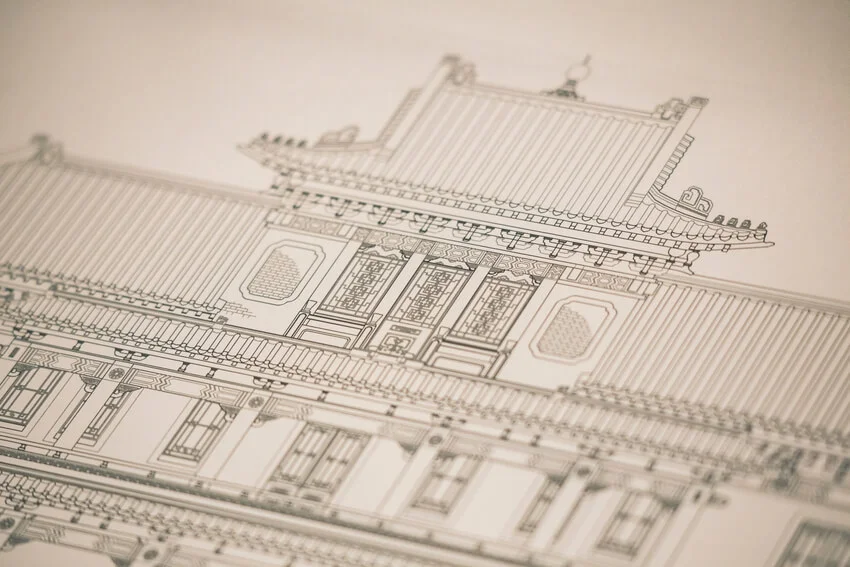
Having an architecture degree can be greatly rewarding. Although it also comes with a trail of challenges - with the long hours, huge chunks of workload and critical focus on details - so it’s vital to understand what you’re about to enter.
Architecture course focuses more on the concept and ideation of the design on paper, whereas the realisation of the building’s construction is part of a Civil Engineering course.
Architecture is a mixture of art and construction engineering that involves planning, surveying, construction, even until the finishing of the decorative side.
Not just about creating the design of the building, architecture also involves other disciplines, such as interior design, landscape, and urban planning. Hence, architecture is regarded as a field that can give you skills for a wide range of careers.
What is Architecture, Building and Planning all about?
Architecture is the study to design buildings and environments that are useful, sustainable, and aesthetically pleasing. This indicates an understanding of people’s needs, the science of technology and science of buildings and concepts of aesthetics.
In this course, you get the opportunity to shape and transform the environment.
With a project-based approach to learning, architecture course synthesizes creative, technical, environmental, and social considerations. It is fueled by a forward-looking and entrepreneurial spirit, too!
Also read: Architecture: An Art Or Science?
What are the specialisations in Architecture?
Architecture course is a major framework of 4 different studies:
1. Architecture
Architecture is the art or practise of designing and constructing buildings and the architectural works are often perceived as cultural symbols. The designer, an architect “paints” his/her works on our land instead of a canvas.
Besides designing a building aesthetically, an architect must make sure that the building is safe and functional by applying his/her knowledge in art, science and technology.
2. Building/Construction
A degree in building and construction covers the study of building materials, techniques, building economics, quantity surveying and property development to give you knowledge in planning, creating, maintaining and conserving buildings. It plays a very important role in the safety of the buildings and constructions.
3. Landscape and Garden Design
Landscape and garden design plays an important role in increasing the quality of life by designing parks, gardens, campuses, trails and streetscapes that help define a community.
A landscape architect analyze, plan and design the built and natural environment with their knowledge in architecture, botany, geography, ecology and other disciplines which are useful in the design process to enhance the natural beauty of a space and provide environmental benefits.
4. Urban Planning
Urban planning, also known as urban and regional planning, is the design of land use according to the built environment including air, water, transportation, communications and distribution network with the goal of optimizing the effectiveness of a community’s land use and infrastructure.
What kind of subjects are taught in Architecture course?
In this course, you will learn many things that are related to the creation, concept of buildings or projects.
The subjects that you come across will vary, depending on the specialisation that you take in the major.
A glimpse of subjects that are offered in BSc in Architecture at Universtiy College London (Bartlett School):
|
Year 1 |
|
|
Year 2 |
|
|
Year 3 |
|
What are the skills and characteristics needed for Architecture studies?
While it is rewarding and fun, architecture can be a tough course to pursue. Check the following qualities before you decide on taking this course to ensure that you’re prepared:
1. Creative and imaginative
Architecture course will require you to be creative that is heavily emphasised on a great extent of imagination.
This is important so that the artwork that you produce will meet the demand as the market in architecture involves new innovation at stake.
To work in the creative and design world, you will have to get used to thinking outside of the box.
There are many other buildings and designs that are created out of new inspiration from things that have never been done or thought of before.
2. Patience in paying attention to detail
Architecture is not an easy field to take over and it requires a high degree of patience to create.
This is due to the high level of detail that needs to be attended in replenishing the produce. Both of these characteristics are interrelated with each other.
3. Math
Mathematics is often a basic prerequisite to enrol in any degree which is related to architecture, building and planning.
Strong mathematical skills are crucial to ensure the safety of a building and the cost of a construction project is within its budget. If you are struggling with Mathematics, you might want to improve them as it is an essential skill in this field.
4. Able to work under pressure
Majority of career in the architecture field is always strict on their deadline setting. For that, you will have to be good enough to work fast.
You will be facing plenty of pressure and criticism in your career in architecture, both from your own superiors and clients that you work with.
Not to mention the intensive workload and long hours that it takes. As such, you will need a resilient mentality.
What are the top Universities in the UK for Architecture course?
The table below showcases the top universities in UK for architecture course, according to QS Universities:
|
University |
Location |
|
London |
|
|
Manchester |
|
|
Cambridge |
|
|
England |
|
|
Reading, South England |
|
|
Leicester |
|
|
Edinburgh |
|
|
Leicester |
|
|
Wales |
|
|
New Castle, England |
Also read:
- Rankings of universities in UK
- Want To Study In UK With A Limited Budget? Check Out Our Compilation Of The Most Economical Universities There
- The Cheat Sheet to Top UK Universities
What is the career outlook for Architecture graduates from the UK like?
As mentioned previously, the career opportunity for this major is great and can always be found across industries and sectors.
Here are some of the career options that you can consider as a graduate:
- Technical architect
- Design architect
- Building Information Modeling (BIM) manager
- Specifications (specs) writer
- Project manager
- Workplace consultant
- Interior designer
- Sustainability consultant
- Urban designer
- Feng shui consultant
- Sole proprietor
The wage that you will make while working in this field in the UK is comparatively high, but it is not the same across, depending on the occupation.
The below table showcases the different types of jobs that an architecture graduate and the average salary according to Salary Explorer:
|
Occupation |
Average Salary |
| Architect | RM7,327 |
|
Design architect |
RM6,735 |
| Architectural manager | RM8,970 |
|
Design manager |
RM7,696 |
| Landscape artist | RM6,681 |
|
Interior designer |
RM7,208 |
How long is the duration of studies for Architecture, Building course in the UK?
The duration of studies will depend on the level of studies that is taken.
|
Bachelor’s Degree |
3 years |
|
Master’s Degree |
1-3 years |
What are the entry requirements for Architecture, Building in the UK?
Each university has different entry requirements and the list below does not generalise the entry requirement of universities in UK as a whole.
|
Undergraduate |
|
|
SPM |
A pass in SPM / O-Level or equivalent with 5 credits including English and Mathematics with a pass in Bahasa Melayu and History in SPM |
|
English |
IELTS (minimum 6.5 overall), TOEFL (minimum 650 or 102) |
|
A Level |
Min. AAB, with a balance of art, sciences and writing ability. |
|
International Baccalaureate Diploma |
32 points |
|
Diploma or Foundation |
Min. CGPA 2.67 |
|
Additional pre-requisite |
Pass School of Architecture, Building and Design Aptitude Assessment (for some universities) |
|
Supporting document |
Design and art portfolio |
|
Postgraduate |
|
|
Bachelor’s Degree |
CGPA minimum 2.5 - 3.0 |
|
Working experience |
Min. 6 months (vary on the universities) |
|
English |
IELTS (minimum 6.5 - 7.0 overall), TOEFL (minimum 650 or 102) |
|
Additional prerequisites |
Pass interview which includes review of Design Portfolio and Personal Statement (for some universities) |
|
Supporting documents |
Recommendation letter, updated CV and design & art portfolio |
Also read: Top things international students value when studying in the UK
How much is the tuition fee to study Architecture, Building courses in the UK?
There is a different variant to tuition fees in the UK, depending on the course and university that is chosen.
The estimated tuition fee per year for Architecture course in the top universities in UK can be seen here:
|
Programme |
Estimated Fees (per year) |
|
Bachelor’s Degree |
£21,000 - £30,000 |
|
Master’s Degree |
£17,000 - £28,000 |
|
PhD |
£19,000 - £25,000 |
The fee above only covers the tuition fee and not other additional fees nor living expenses.
Living expenses of students in the UK depend on the location of the university and the city that you live in.
FAQ
1. Do I need to complete advanced mathematics or maths A-level for Architecture degree?
Different universities will have different course requirements. More artistic subjects can prove useful, particularly where the technical drawing is involved.
2. Is physics necessary in Architecture course?
There are myths around physics and maths. In reality, there are a lot of students with a background in arts & humanities, design tech, or maths and science.
3. Are there any extra costs?
Although you may skimp on spending on textbooks, you’ll spend money on scalpel blades, drawing tools, photocopying, printing, and modelling materials.
In summary, each end of the project you will roughly spend about GBP 150 to print your portfolio as you go.
4. What should I include in my portfolio before applying to an architecture course?
Include a wide range of drawings. From human figures, perspectives, and landscapes. Hand drawings, specifically gestural drawings are highly encouraged.
5. How do I choose the best university for architecture course?
You should always be prioritising a university that suits yourself. There are many factors to consider, such as campus environment, location, facilities and tuition fee.
For some stances, you can also consider other engineering schools that aren’t necessarily in the top 10 of the country.
You can contact our counsellors to have a better guide and consultation regarding this.
6. When can I enrol to a university in the UK?
If you’re interested to continue to study in the UK, the general admission will be different for each university. You may contact the administration of your desired university or you can browse through their website to get further info on the enrollment period.











